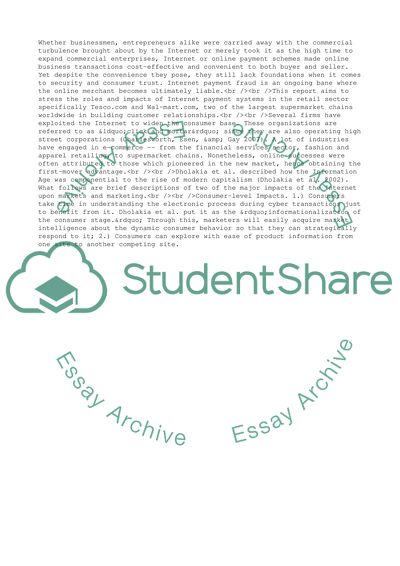Cite this document
(The Impact of Internet Payment Systems upon the Retail Sector Coursework - 1, n.d.)
The Impact of Internet Payment Systems upon the Retail Sector Coursework - 1. https://studentshare.org/business/1741434-the-impact-of-internet-payment-systems-upon-the-retail-sector
The Impact of Internet Payment Systems upon the Retail Sector Coursework - 1. https://studentshare.org/business/1741434-the-impact-of-internet-payment-systems-upon-the-retail-sector
(The Impact of Internet Payment Systems Upon the Retail Sector Coursework - 1)
The Impact of Internet Payment Systems Upon the Retail Sector Coursework - 1. https://studentshare.org/business/1741434-the-impact-of-internet-payment-systems-upon-the-retail-sector.
The Impact of Internet Payment Systems Upon the Retail Sector Coursework - 1. https://studentshare.org/business/1741434-the-impact-of-internet-payment-systems-upon-the-retail-sector.
“The Impact of Internet Payment Systems Upon the Retail Sector Coursework - 1”. https://studentshare.org/business/1741434-the-impact-of-internet-payment-systems-upon-the-retail-sector.


